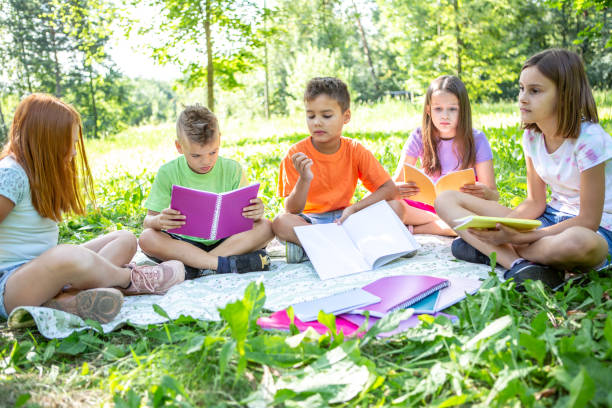In an era of screens and standardized testing, students are spending less time outside than ever. But what if the key to better grades, stronger engagement, and improved mental health is right beyond the classroom door? Enter outdoor learning, a dynamic approach that blends curriculum with fresh air, physical activity, and real-world experience. From science lessons in school gardens to math games in local parks, outdoor learning K–12 offers more than a change of scenery.
It enhances how children think, feel, and connect with the world around them. In this guide, we explore the benefits of outdoor learning in schools, backed by research and practical examples. Whether you’re a teacher, parent, or school leader, you’ll learn why going outside could be the smartest move for student success.
What Is Outdoor Learning K–12?
Outdoor learning refers to educational experiences that take place outside the traditional classroom. This includes lessons in nature, playground-based activities, fieldwork, and even schoolyard science experiments. It’s not recess or free play—it’s structured learning aligned with academic goals.
Stat: According to the Children & Nature Network, students who engage in outdoor learning show 27% higher science scores and better focus.
1. Enhances Academic Performance
Outdoor learning improves concentration, memory, and academic achievement. Engaging with content in a natural environment makes abstract concepts more relatable.
Example: A 3rd-grade class improved their geometry scores after weekly math sessions in the school garden.
2. Supports Mental Health and Wellbeing
Nature has a calming effect that helps students manage anxiety, reduce stress, and develop emotional regulation skills.
Insight: A 2022 Stanford study found that students who spent 1 hour per week outdoors reported a 31% reduction in stress symptoms.
3. Encourages Physical Activity and Health
Incorporating movement into learning naturally increases physical activity. This is especially important in combating childhood obesity and sedentary lifestyles.
Case Study: A K–5 school in Oregon saw a 40% decrease in behavior referrals after implementing daily outdoor learning blocks.
4. Builds Social Skills and Teamwork
Outdoor learning promotes collaboration, leadership, and communication, especially through group challenges, nature-based projects, and team problem-solving tasks.
Insight: Students often show increased empathy and conflict resolution skills when learning in mixed-age outdoor settings.
5. Deepens Environmental Awareness
When children interact with nature, they develop a personal connection to the planet, a key to fostering lifelong environmental stewardship.
Example: A 5th-grade classroom began a composting project that integrated science, math, and civic responsibility.
6. Improves Focus and Reduces Disruptions
Students with ADHD and sensory processing challenges often respond exceptionally well to outdoor settings, where movement is encouraged and overstimulation is minimized.
Stat: The American Institutes for Research reports that outdoor learning reduces off-task behavior by up to 25%.
7. Makes Learning More Engaging and Fun
Kids are naturally curious, and outdoor learning taps into that curiosity. Whether it’s observing a caterpillar, building shelters in the woods, or estimating cloud speed, students are actively involved in their learning.
Analogy: Outdoor learning is like “real-world Netflix for kids’ brains,” engaging, unpredictable, and immersive.
How Schools Can Implement Outdoor Learning
Schools can bring outdoor learning to life by weaving nature into everyday lessons. This might mean setting up simple outdoor classrooms, taking students on nature walks, planting a garden, or doing science experiments right in the schoolyard. Even small changes, like moving a reading session outside, can make learning more fun, hands-on, and meaningful.
Read Also: 15 Top Educational Websites for Kids in 2025
Conclusion
The benefits of outdoor learning in schools go far beyond fresh air. From boosting academic performance to supporting mental health and encouraging environmental stewardship, this approach transforms education into a whole-child experience. Outdoor learning K–12 connects students to their lessons, their peers, and the world around them in meaningful, memorable ways. Best of all, it’s flexible; schools can adapt it to any environment, from urban campuses to rural playgrounds.
As educators and parents, we have a unique opportunity to expand learning beyond walls. So whether it’s a 10-minute math walk or a full garden-based science unit, taking learning outside isn’t just a trend, it’s a proven, powerful tool for student growth. Let’s bring the classroom into the sunlight and watch students thrive.
FAQs
What is outdoor learning in schools?
Outdoor learning is structured education that happens outside, often in natural or open-air settings, supporting academic and personal growth.
Why is outdoor learning important for students?
It enhances focus, physical health, social skills, and engagement, while also improving academic outcomes and emotional wellbeing.
Can outdoor learning improve academic results?
Yes, studies show students perform better in math, science, and reading when outdoor learning is part of the curriculum.
What are examples of outdoor learning activities?
Gardening, measuring trees, weather journaling, and group science experiments are common outdoor activities in K–12 education.
How do schools start an outdoor learning program?
Schools can begin with small steps like weekly outdoor lessons, teacher training, and using existing spaces like playgrounds or courtyards.
